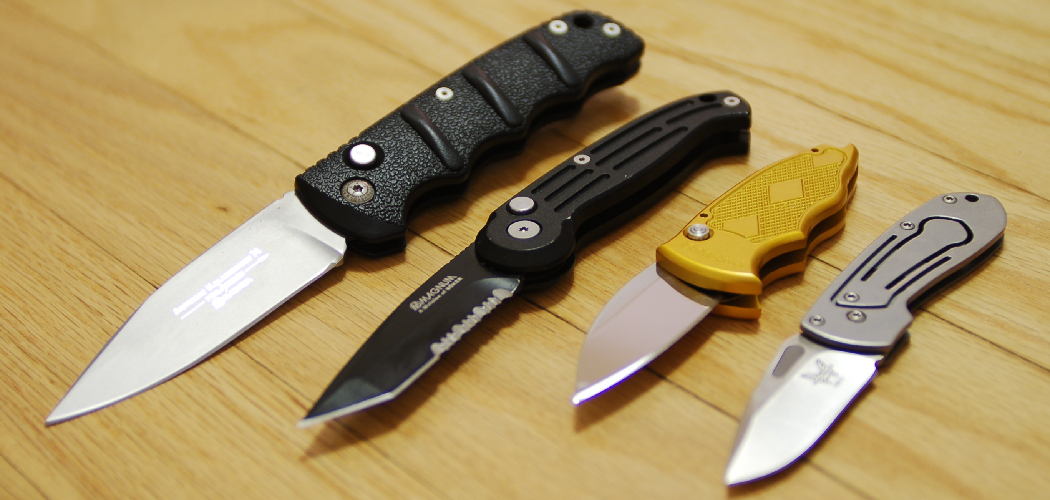Any knife owner will eventually face the task of sharpening their blades. While some people enjoy the challenge of manual sharpening, others prefer to use an electric sharpener. However, Sharpen Benchmade Knife with ease. First, identify the bevel angle you need.
Second, use a honing rod or diamond stone to hold your blade at the correct angle and sharpen the blade with smooth, even strokes.Third, use a fine-grit polishing wheel to remove any burrs and create a razor-sharp edge. In this blog post, you will learn in detail how to sharpen benchmade knife.
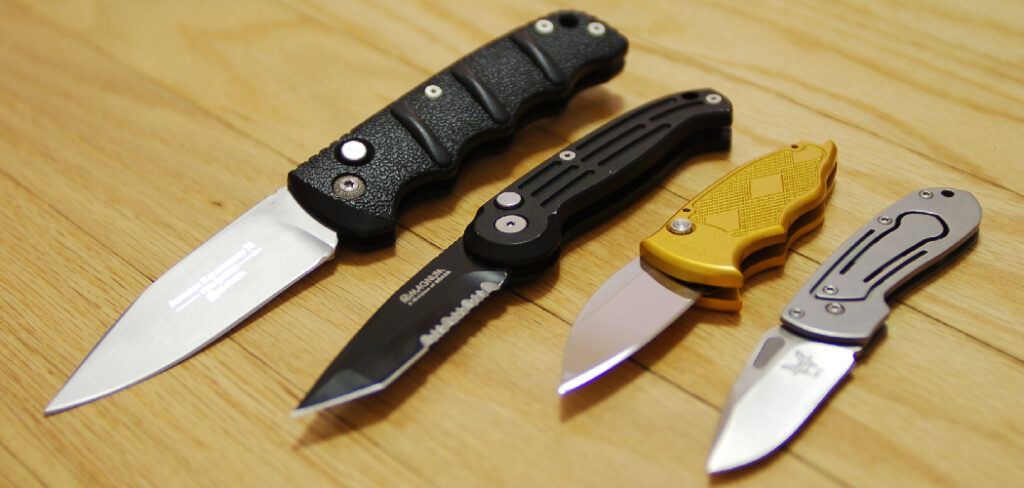
How Often Should You Sharpen Your Knife?
It really depends on how often you use it. If you are using your knife daily, then you should sharpen it every couple of weeks. However, if you only use it once in a while, then you can get away with sharpening it once a month or so.
The best way to tell if your knife needs to be sharpened is to try cutting something with it simply. If the blade cannot easily slice through the material, then it is time for a sharpening.
There are a few different ways that you can sharpen your Benchmade knife. You can use a sharpening stone or a honing rod or even send it back to the factory to have it professionally done.
Step-by-Step Processes for How to Sharpen Benchmade Knife
Step 1: Inspect the Knife
Look for nicks or chips in the blade. If the Benchmade knife is extremely dull, it may need to be honed and sharpened. Select the correct whetstone. For a standard Benchmade knife, use a medium-grit or fine-grit stone. If the knife is very dull or damaged, use a coarse-grit stone to remove more metal from the blade.
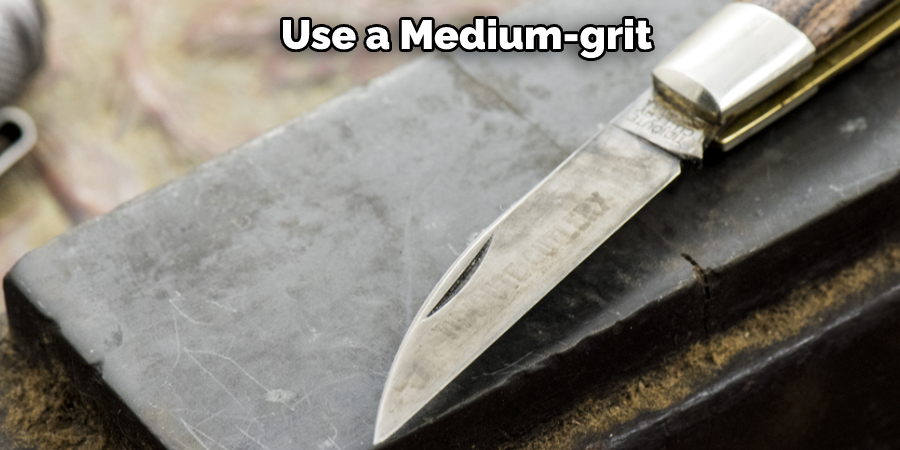
Step 2: Soak the Whetstone
Soak the whetstone in water for at least 10 minutes before sharpening the Benchmade knife. This will help to keep the stone from drying out too quickly.
Step 3: Place the Whetstone on a Flat Surface
Place the whetstone on a flat surface, such as a countertop or cutting board. Ensure the surface is stable and will not move around while sharpening the knife.
Step 4: Hold the Knife at the Correct Angle
To sharpen the blade correctly, you must hold it at the correct angle. For a standard Benchmade knife, hold the blade at a 20-degree angle. If the knife is very dull or damaged, you may need to hold it at a 10-degree angle.
Step 5: Sharpen the Knife
Slowly run the blade along the whetstone, using a back-and-forth motion. Be sure to maintain the correct angle as you sharpen the knife.
Step 6: Test the Sharpness of the Knife
Once you have finished sharpening the knife, you will need to test the sharpness of the blade. To do this, simply try slicing through a piece of paper or cloth. The blade should slice through easily with little pressure. If the blade is not sharp enough, continue sharpening it until it is.
Step 7: Clean and Store the Knife
Once you have finished sharpening the knife, be sure to clean it and dry it off completely. You should also oil the blade to help protect it from rust. Once the knife is clean and dry, you can store it safely until you need to use it again.
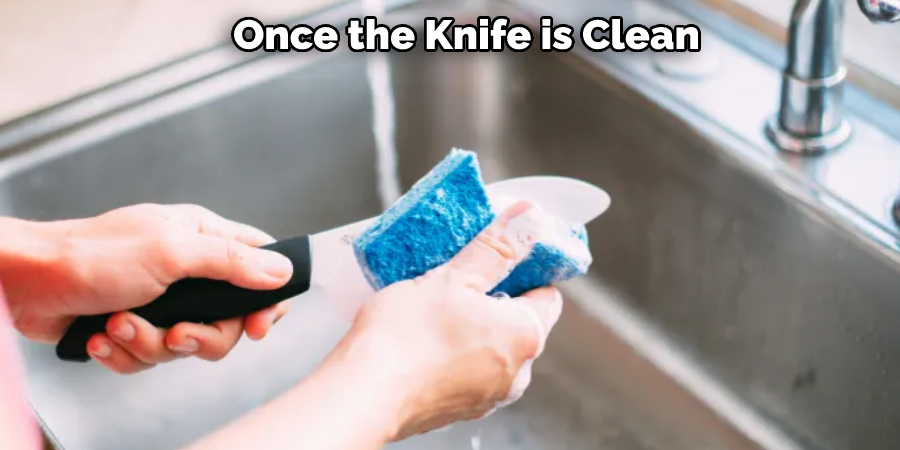
Tips for How to Sharpen Benchmade Knife
- Always use a sharpening stone that is larger than the blade you are trying to sharpen. This will help prevent the blade from becoming too hot during the sharpening process.
- Use a light touch when sharpening your knife. You should only apply enough pressure to raise a burr on the blade’s edge, and be sure to keep the blade at a consistent angle when sharpening. This will help ensure a sharp, even edge.
- Use circular motions when sharpening your knife. This will help create an evenly sharpened edge and cleanse the blade after each pass on the stone. This will remove any metal filings that could dull the blade.
- Soak your stone in water for at least 10 minutes before sharpening. This will help keep the stone from becoming too hot during use and start with a coarse grit stone when sharpening your knife. This will remove any major nicks or damage to the blade.
- Work your way up to a finer grit stone for a sharper edge. This will help remove any smaller imperfections on the blade and avoid using your knife to cut through hard materials like bone or metal. This can damage the blade and make it difficult to sharpen.
- Always use sharpening steel made of high-quality materials. This will help prolong the life of your knife and avoid using your knife to pry open cans or other objects. This can damage the blade and make it difficult to sharpen.
- Never force the blade through the material you are trying to cut. This can damage the blade and make it difficult to sharpen. Always store your knife in a safe place when not in use. This will help prevent accidental damage to the blade.
- Never put your knife in the dishwasher. The harsh chemicals can damage the blade and make it difficult to sharpen. Always have your knife professionally sharpened if you are not comfortable doing it yourself.
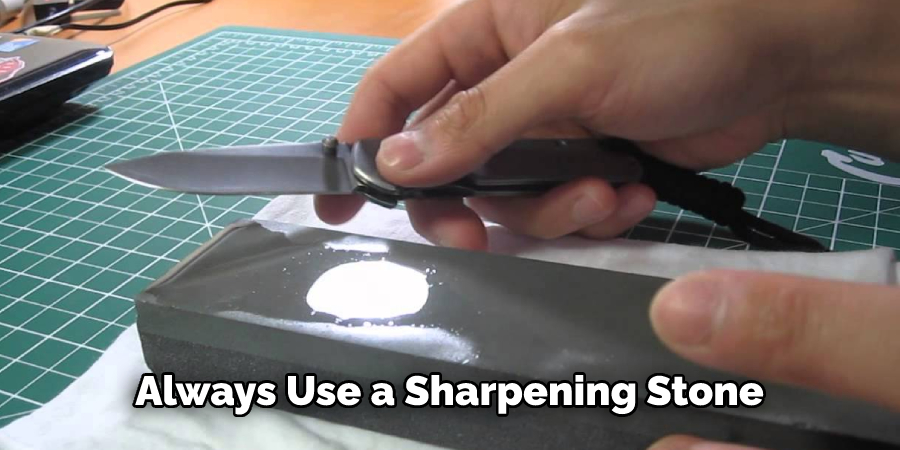
How Can You Tell When Your Knife Needs to Be Sharpened?
The best way to tell when your knife needs to be sharpened is to use the “toothpick test.” Stick the toothpick into the blade’s center and then draw it out. If the toothpick comes out clean, then your blade is still sharp. If there is any resistance or the toothpick comes out with particles attached, then it’s time to sharpen your knife.
There are a few different ways that you can sharpen your Benchmade knife. You can use a sharpening stone, a honing rod, or a sharpening system. Whichever method you choose, it’s important to follow the manufacturer’s instructions carefully so that you don’t damage the blade.
Sharpening stones are available in various grits, from coarse to fine. Coarse stones are used to quickly remove large amounts of material, while fine stones are used for finishing and polishing the edge. If you’re unsure which grit to choose, start with a medium-grit stone and then move on to a finer grit if necessary.
Why Should You Go to the Professional to Sharpen Benchmade Knife?
The main reason to take your Benchmade knife to the professionals for sharpening is that they have the experience and expertise to do it properly. They know the correct angle to sharpen the blade and how much pressure to apply, so you’ll have a razor-sharp edge that will perform well and last longer.
Another reason to use a professional service is that they will have the right equipment. They’ll use a high-quality sharpening stone or diamond hone that will quickly and efficiently sharpen your blade without damaging it.
If you try to sharpen your Benchmade knife at home, you may not achieve the same level of sharpness and could damage the blade. So it’s worth spending a few extra dollars to have it done right by professionals.
How Much Will It Cost if You Help From a Professional?
If you’re looking to get your Benchmade knife professionally sharpened, it will likely cost you between $5 and $10 per knife. However, the price will vary depending on the type of service you choose and the store’s location. Some stores may also charge additional fees for shipping and handling.
In most cases, it is more cost-effective to sharpen your own knives at home. However, if you don’t feel confident in your ability, it’s always best to seek a professional.
Can You Sharpen a Knife Too Much?
You can sharpen your knife too much, but it is not easy to do. If you over-sharpen your knife, the blade will become thinner and weaker. The best way to avoid this is to use a sharpening stone appropriate for the steel’s level of hardness. For example, if you have very hard steel, you should use a harder sharpening stone. If you have a softer steel, you can use a softer stone.
If you do over-sharpen your knife, the best way to repair it is to use a honing rod. A honing rod will realign the blade’s edge and make it sharper. Generally, it is best to sharpen your knife every few weeks or so. This will keep the edge in good condition and prevent you from over-sharpening it.
You Can Check It Out to Date a Camillus Kabar Knife

Conclusion
In conclusion, knowing how to sharpen your Benchmade knife is important. This will ensure that it remains in good condition and can be used for a long time. The best way to sharpen your Benchmade knife is to use a honing rod or diamond sharpener.
Be sure to use consistent strokes and do not over-sharpen the blade. You can keep your Benchmade knife sharp and ready for any task with a little practice. I hope this article has been beneficial for learning how to sharpen benchmade knife.
You Can Check It Out to Turn on Induction Stove

